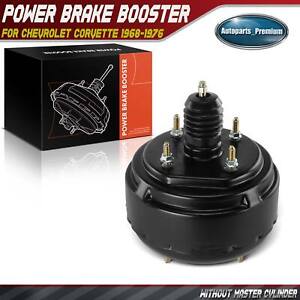Brake Boosters Give Extra Stopping Power
When you're driving down the road, there's comfort in knowing that, beyond your foot pushing the pedal, your brakes get an extra boost from vacuum or hydraulic pressure. A brake booster provides that peace of mind.
How does a brake booster work?A brake booster assists in stopping vehicles by multiplying the force exerted by the driver. As a result, a brake booster enables a car to brake at a shorter distance with less effort. Brake boosters use a vacuum, hydraulics, or electronics to increase the clamping pressure.
Where is a brake booster located?The booster attaches between the brake pedal and the master cylinder, which contains the brake fluid. A vacuum brake booster is often mounted on the engine firewall.
Brake boosters on older vehiclesMany vehicles sold before 1960 used strictly manual brakes. A booster for these vehicles is not necessary, but manual brakes require more effort and longer distances to bring the car to a stop.
Cars that did not initially have brake boosters (power brakes) can be retrofitted. Fortunately, vacuum boosters and hydro-boost systems are readily available on eBay Motors.
Types of brake boostersThere are three common types of brake boosters:
- Vacuum brake booster: This booster is a large cylinder, generally about 10 inches in diameter and 5 inches deep, with one or more rubber diaphragms. See the manufacturer site for details. When the brake pedal is not in use, the vacuum is at equilibrium on both sides of the diaphragm. When the brake pedal is pushed, the lever that passes through to the master cylinder opens a small valve allowing the air to enter one side of the diaphragm, thereby increasing brake pressure.
- Hydraulic (hydro-boost) brake booster: Hydraulic brake boosters use hydraulic pressure from the power steering system to power the brake booster. A standalone pump can generate hydraulic pressure if a vehicle doesn't have power steering. Hydro-boost brakes are commonly used in diesel vehicles and cars that do not produce a sufficient vacuum.
- Electro-hydraulic brake booster: These boosters are often used in hybrid and electric vehicles and are also known as “brake-by-wire.” The system is part electric and part hydraulic but has no direct connection between the pedal and brake system. Instead, pressing the brake pedal activates sensors that send electrical signals to a controller that analyzes input from several sensors to determine how much pressure is needed on each wheel. While technically not a booster, electric braking generates tremendous brake power. The system also works with regenerative braking on electric vehicles.
Brake boosters are designed to work with specific braking systems, so they are not always interchangeable. It's also common that braking systems are designed to work as one unit, so mixing and matching parts is not recommended. These factors need to be considered when selecting a brake booster:
- The type of braking system
- The booster's dimensions
- The number and diameter of the diaphragm(s)
Since a vacuum brake booster relies on the car engine vacuum, it can fail if the vacuum line breaks or is disconnected. Likewise, the diaphragm may leak or break. The valve in a vacuum booster that allows the air to press against the diaphragm may become stuck. Hydraulic boosters could also develop a leak. The driver will notice something is wrong if more foot pressure is needed to stop the vehicle, if the brake pedal sits higher than normal, if there is an increased braking distance, if hydraulic fluid leaks, or if the power steering fails. In any case, the dashboard warning light should illuminate.
Can the brake booster be repaired?Yes. Most brake boosters can be fixed. Depending on the cause, the repair can be as simple as replacing a cracked vacuum line leading to the brake booster or replacing a torn diaphragm in the brake booster.




































































